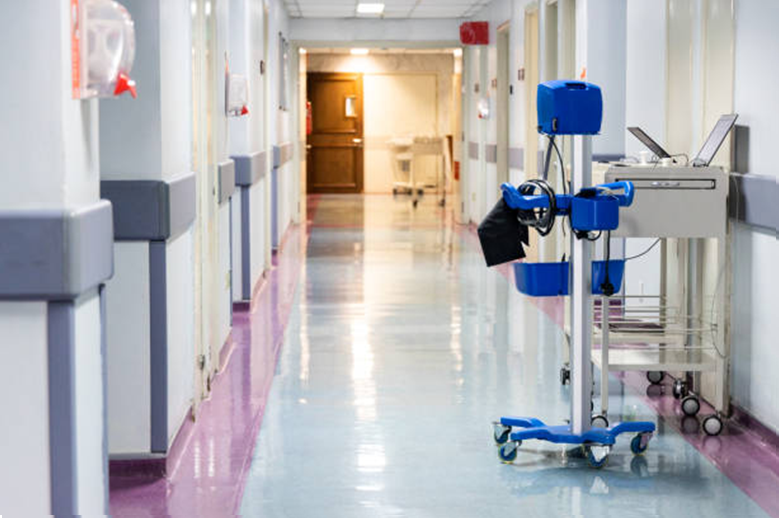In healthcare settings, particularly in busy hospitals, medical carts play an indispensable role in patient care, allowing healthcare providers to access medical supplies, equipment, and medications quickly and efficiently. To ensure the smooth and safe movement of these carts, swivel casters are a crucial component. Swivel casters not only contribute to the mobility of medical carts but also enhance workflow efficiency and patient safety in fast-paced and often crowded healthcare environments.
This article provides a comprehensive analysis of why swivel casters are essential for medical carts, exploring key factors that impact their effectiveness, the tradeoffs involved in different approaches, and the challenges faced in selecting the appropriate caster for various healthcare settings.
Key Factors Impacting the Effectiveness of Swivel Casters in Healthcare Environments
- Improved Maneuverability
One of the primary reasons swivel casters are favored in medical carts is their ability to enhance maneuverability. In hospitals and healthcare facilities, aisles are often narrow, and staff frequently need to navigate through tight spaces. Swivel casters allow medical carts to change direction easily with minimal effort, which is particularly beneficial when moving through busy hallways or between rooms. This flexibility improves the speed of medical staff when responding to patient needs and ensures a smoother workflow.
Tradeoff: While swivel casters offer excellent maneuverability, they can also make the cart less stable compared to fixed casters. This can be a concern when the cart is loaded with heavy or delicate equipment. In these cases, a combination of swivel and fixed casters may be a better option, balancing maneuverability with stability.
- Reduced Physical Strain on Healthcare Workers
Healthcare workers often need to push or pull medical carts over long distances throughout their shifts. Swivel casters ease this burden by reducing the physical effort required to maneuver the carts. Instead of having to manually turn the cart around corners or navigate through tight spaces, swivel casters enable smooth, effortless movement in any direction. This ergonomic benefit is especially important in reducing strain and fatigue, which can contribute to workplace injuries over time.
Tradeoff: The reduced effort required to push medical carts with swivel casters can be offset by the increased likelihood of carts rolling away if not properly locked in place. It’s important to ensure that the swivel casters are paired with reliable locking mechanisms to prevent unintended movement, particularly when carts are stationary or need to be positioned in specific areas.
- Enhanced Safety and Stability
Swivel casters contribute to the overall safety of medical carts by making them more maneuverable. In critical situations, such as emergency rooms or intensive care units, speed and precision are vital. Medical carts with swivel casters allow healthcare providers to quickly and safely navigate around patients, staff, and medical equipment, reducing the risk of collisions and ensuring that the cart can be repositioned swiftly when necessary.
Tradeoff: The challenge with swivel casters, however, is that they can sometimes lead to less stability, especially when the cart is heavily loaded. If not designed with the right load-bearing capacity, swivel casters can make carts more prone to tipping, particularly when they are being pushed or pulled in different directions.
- Durability and Long-Term Reliability
Medical carts are used constantly, and the casters on these carts must withstand heavy loads and repeated use over long periods. Swivel casters, when made from high-quality materials such as polyurethane, stainless steel, or other durable materials, can provide excellent longevity and performance. A high-quality swivel caster ensures that the cart continues to roll smoothly even under the weight of medical equipment, supplies, and medications.
Tradeoff: As with any mechanical component, there is a potential tradeoff between cost and quality. High-performance swivel casters that offer superior durability may come at a higher price, which could be a consideration for healthcare facilities working within tight budgets. However, investing in durable casters can reduce the frequency of replacement, ultimately saving costs over the long term.
- Hygiene and Easy Maintenance
In healthcare environments, maintaining cleanliness is a top priority to prevent the spread of infections. Swivel casters can be designed with materials and finishes that are easy to clean, which helps reduce the buildup of dust, dirt, and bacteria. Additionally, swivel casters with sealed bearings and smooth surfaces can prevent the accumulation of contaminants, making them ideal for environments like hospitals, clinics, and laboratories, where hygiene is critical.
Tradeoff: While swivel casters are generally easier to clean, they can require more frequent maintenance to ensure their smooth operation. If swivel casters are exposed to harsh cleaning agents or undergo rough use, the bearings can wear down over time. This necessitates regular inspection and maintenance to ensure the cart remains safe and functional.
Balancing the Factors: When to Choose Swivel Casters vs. Fixed Casters
Choosing between swivel casters and fixed casters—or a combination of both—depends on the specific needs of the healthcare facility and the type of medical carts being used. Swivel casters are particularly useful in situations where maneuverability and ease of movement are paramount. However, fixed casters provide better stability and support for heavy equipment.
For example, carts used for storing light medical supplies may benefit more from swivel casters due to their ability to easily navigate tight spaces. On the other hand, carts that transport sensitive medical equipment, such as imaging machines or diagnostic tools, may require a mix of swivel and fixed casters to ensure both ease of movement and stability.
Wrapping Up: The Importance of Swivel Casters in Healthcare Environments
In busy healthcare environments, the movement of medical carts plays a critical role in ensuring that staff can access essential supplies and provide timely care to patients. Swivel casters are essential in improving the efficiency, safety, and ergonomics of these carts, making them a vital component in healthcare facilities. While there are tradeoffs to consider—such as the potential lack of stability under heavy loads or the cost of high-quality casters—the benefits of swivel casters in terms of maneuverability, physical strain reduction, and long-term reliability far outweigh the drawbacks.
Healthcare facilities must carefully evaluate their needs, consider the specific environment in which the medical carts will be used, and invest in high-quality casters that meet their operational requirements. In doing so, they can improve patient care, reduce the risk of injury, and maintain an efficient and safe working environment for healthcare professionals.




